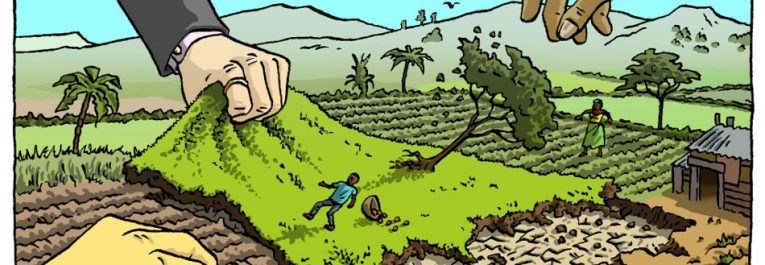In the past decade, significant international attention focused on “land grabs” in developing countries by companies and others hungry for land to grow food and procure resources for the world’s growing population. Tens of millions of acres of land in Africa, Asia, and Latin America were acquired by international companies and investors, in some cases creating the potential for economic development, but in many other cases displacing local communities and causing economic and social dislocation.
As time has passed, however, it has become clear that there is a second part of this land grab phenomenon: what amounts to a “land fumble.” In many countries, investments have failed, been abandoned or greatly delayed, or have shrunk significantly. Having been awarded vast tracts of land by governments, many companies are now returning or abandoning some or all of these vast swaths of territory. The reasons vary, but discussions with investors and press reports suggest that:
- Companies were simply given too much land;
- Companies are going bankrupt or projects have proven commercially unviable;
- The land allocated is not fit for the intended commercial purpose; and
- The land is saddled with disputes making it too risky or too time consuming to develop.
There is abundant evidence of these land fumbles. Examination of large (+200 hectare) transnational land investment deals tracked by the Land Matrix shows that while over 41 million hectares have gone under contract, less than 25% of this has actually entered into production and operation. While the data base lists only about 10% of the acreage involved as being abandoned, reports released by Land Matrix in 2016 and 2017 suggest more widespread problems in investments being operationalized.
In Mozambique and Tanzania, the governments are auditing concessions with an eye to repurposing the land because some are not being used or are underutilized. In Myanmar, the majority of land being returned to those who lost it, or allocated to landless households, is from lands confiscated by past governments and unused concessions. This amounts to about 1.1 million hectares and counting. Also in Myanmar, forest land from unused concessions is being identified for community forests, which will likely account for millions more hectares. And a significant focus of the new agrarian reforms in Indonesia under the new Perpres (executive order) signed by President Jokowi in September 2018 is based on reallocation of unused concessions.
This widespread and perhaps increasing potential for return of land may have beneficial effects for smallholders, for productive use of land, and for conservation. But just as the great land grab took place in a context of weak rule of law, national legal frameworks that were unable to protect the rural poor, and an international legal and policy framework that had to play catchup, land fumbles are occurring with little local, national, or international guidance on how to return land to governments and communities. This leaves a basket of risks awaiting the companies, governments, and people involved, such as:
- Domestic laws, such as Mozambique’s, that provide little or conflicting guidance on how a concession is to be abandoned or returned;
- Some community lands, such as those in Tanzania, were converted to general or government land in order for the concession to be awarded, so any returned land will go to the government, not to the community or village;
- Many communities expected economic development or were promised benefits from the land allocations, which now will not be realized;
- Many companies promised jobs and benefits, but their duties to local communities upon exiting a concession or returning it are unclear; and
- Potential fraud and/or elite capture of returned lands.
The procedures to be followed and equities to be acknowledged in these situations are not particularly clear nor have good international practices emerged to date. The USAID Operational Guidelines suggest that project contracts specify what will happen should a project terminate early, including provisions for returning land to communities, not to governments. But reviewing such contracts is notoriously difficult. A report by the International Senior Lawyers Network and Columbia Center for Sustainable Investment summarized typical agricultural land concession agreement provisions. It noted that most termination provisions called for reversion of land and improvements to the government upon contract termination. It did not specify how local communities might be made whole, if at all, upon termination of a contract, such as through provisions in community benefit or similar agreements.
This growing phenomenon suggests several steps that governments, companies, and donor agencies should begin adopting:
- New investments should explicitly contemplate, and incorporate language to address, how the land holding will be transferred or reduced in size in the event of a project’s reduction in scope, early termination, or failure;
- Concession documents and/or benefit sharing agreements should identify outcomes that will be taken to make communities whole in the event of delays or failures; and
- To the degree it does not already occur, consultation and FPIC processes should explain and explore what may happen should investments fail, be greatly delayed, or be reduced in scope.
By taking these forward-looking steps, risks associated with large-scale land-based investments may be reduced and communities may be protected against a variety of harmful losses.


